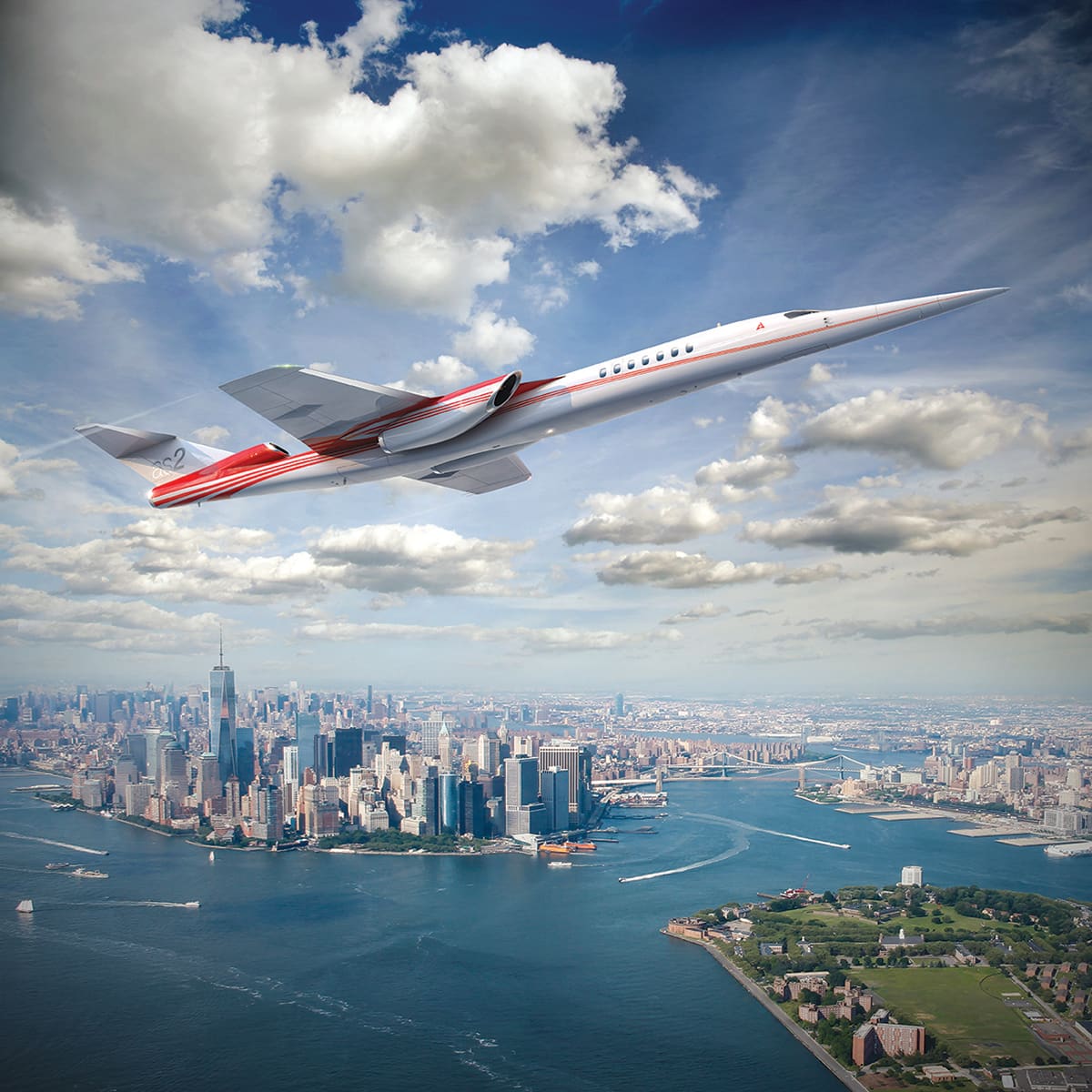Aerion Supersonic as2
NEW YORK CITY – Supersonic air travel is only a few years from returning if a small U.S. company succeeds in developing its next-generation jet.
Nevada-based Aerion expects to begin flying its AS2 supersonic jet by 2024, the company’s CEO Tom Vice said on Thursday, speaking at a UBS conference in New York City.
In addition to flying nearly twice as fast as a commercial aircraft, Aerion developed a patented technology it calls “boomless cruise.” This means AS2 would fly without creating a sonic boom – one of many issues that plagued the supersonic Concorde jets of the past.
“It allow us to fly at supersonic speeds, taking advantage of an atmospheric phenomenology called ‘mach cut-off,'” Vice said. “Although we still create the sonic boom, it actually refracts off a dense layer of the atmosphere called the caustic layer and goes back up.”
“So on the ground you don’t hear it,” Vice added.
Aerion has multiple partnerships with global aerospace companies, including Boeing, and wants to target the private business jet market. Vice said his company sees a market for as many as 300 aircraft over a 10-year period, bringing in as much as $40 billion in revenue.
“I don’t think people want to be stuck in a can at 35,000 feet for 20 hours … [and] the business jet market is just ripe for disruption – it’s only gone up 10% in speed in 60 years,” Vice said.
Aerion expects it will cost $4 billion total to develop AS2, with Vice saying the company has spent about $1 billion to build an engine for the jet. Aerion partnered with General Electric and uses “an off-the-shelf” engine core for AS2, the CEO said, which he believes was much less costly than developing an engine from scratch.
The company’s work on AS2 is already paying off, as Aerion has a $2.5 billion sales backlog for the jet. Vice expects that backlog to grow to $3.5 billion by the end of this year.
“Our backlog in sales is at price of $120 million per aircraft,” Vice said.
Vice gave an example of the demand Aerion expects to see for AS2, noting the company recently ran a model for an investment bank. Comparing AS2’s expected performance to the bank’s fleet of private jets, Aerion found that each person who flew on that fleet would save 3½ weeks of time if they flew on an AS2 instead.
While Vice said the company has redesigned the aircraft since previously released renderings, he only showed a fuzzy image of the new design at the conference. He laughed and said to expect Aerion to unveil a new design “in the next couple of months.”
The next few years will be critical for realizing Aerion’s vision. While the AS2 concept is finished, AS2 will then undergo preliminary design review in October, with the first aircraft beginning construction in about three years. Aerion expects to fly AS2 a year after that, aiming to enter it into commercial service by 2026.
